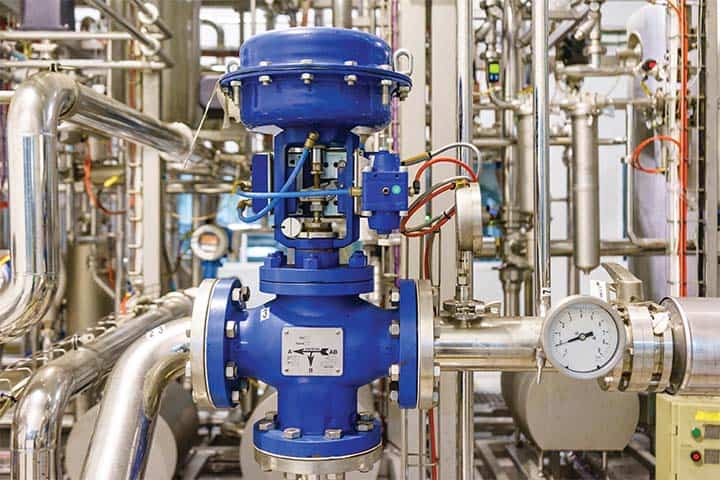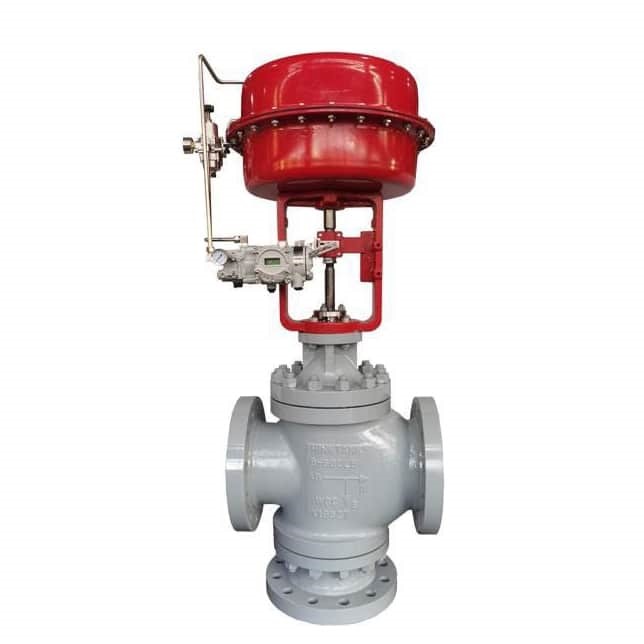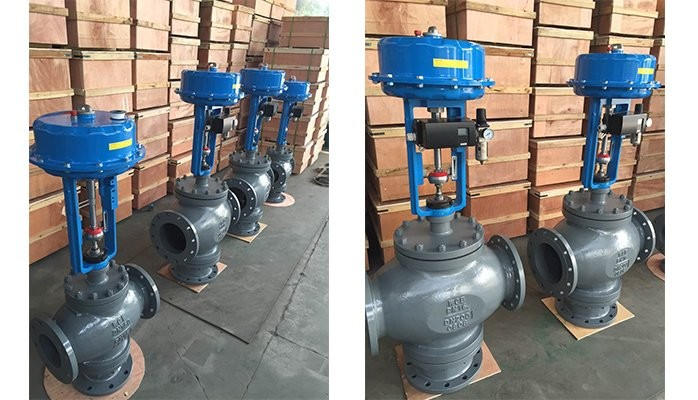
Since 2000, BCST is still manufacturing and supplying high-quality products including 3-way control valves to different industries to increase efficiency and effectiveness. The 3-way control valve by BCST also helps in controlling the processes taking place during the cooling and heating applications. It has committed to all the customers to deliver high-quality industrial instruments like flowmeters, 3-way control valves, machines, and much more.
Now, study about 3-way control valve and place your order:
What is the 3-way control valve?
The 3-way control valve has 3 ports whose names are A, B, and AB. Additionally, it is providing the regulations for the flow as well as you can divert the flow. Even the mixing in two inlets is possible at different pressures or temperatures to provide suitable parameters you may require in the process. This is done frequently whenever there is a need to adjust the temperature of the flowing fluid. You can also control to fulfil the specific flow rate.

Structure of the 3-way control valve:
All the ports in the 3-way control valve are bi-directional. This brings improvement and flexibility along with the alignments in the 3-way control valve. There is a spindle and plug that moves upward and downward for operating the 3-way control valve. When the spindle is in an upward direction, the plug gets disabled medium flowing from A to AB. Whenever the spindle starts moving downwards and closes the port B and then helps the flow from A to AB.
How is the working of the 3-way control valve?
The 3-way control valve is along with the actuator whose design is for controlling accurately the oil, water, steam, and other medium. It is specifically for cooling and heating systems. The typical applications of the 3-way control valve are water chillers, boilers fail coils and air-handing units. The reason to use the 3-way control valve is for shutting off the flowing water in the pipe whenever there is an opening of the flowing fluid in the other pipe. A 3-way control valve helps in mixing the liquids from various pipes into one. Or even you can separate water from a single pipe into two other pipes. 3-way control valve takes assistance from the pneumatic diaphragm actuator, multi-spring, electric actuator, or pneumatic piston actuator. There are three ports present in the 3-way control valve: A, B, and AB. An actuator moves linearly up and down through the plug for controlling the flow throughout the ports. There is a bellow of stainless steel that allows the spindle to move upward and downward. The spindle unit along with the plug and bellows closes the ways from A-AB whenever pulling upwards. There is also closing for port B and a way for opening the A-AB whenever pushing downwards.

What are the approaches to maintaining the 3-way control valve?
· Preventive:
This approach is more like a piece of advice for you as a user of the 3-way control valve. It should be routine practise to maintain the 3-way control valve. This is important for detecting any of the defects that may arise in the 3-way control valve during its working. Conducting preventive maintenance makes the 3-way control valve works efficiently as well as reduces the repairing costs.
· Predictive:
Here, the rendering of the 3-way control valve is dependent on the results from monitoring and testing of the equipment. This is done by using many of the diagnostic equipment such as smart positioners, actuators, performance of the 3-way control valve, programmable logic controllers (PLCs), and controllers are monitored. You can take action instantly whenever there is a need of repairing or maintain the 3-way control valve.
· Reactive:
The beginning of the maintenance is from the outbreaking of the problems. Or you can say take action wherever the problem arises. During some instances, there is a need for immediate reactive if there is any leakage in the 3-way control valve or unable to stroke. In the maintenance reactive stage, the manufacturing team of the 3-way control valve starts taking the steps immediately like replacing or repairing the damaged parts present in the 3-way control valve. Therefore, it is to regain and bring excellency in the working of the 3-way control valve.
Here, applies the phrase “prevention is better than cure”. So, it applies to the mechanical instruments including the 3-way control valve. It is not right to wait for the out breakage in the 3-way control valve and then look for the solutions. Instead of this, start maintaining the 3-way control valve that is dependent on the reactive maintenance upholding the performance of the 3-way control valve with no downtime. Whatever approach you select for maintaining the 3-way control valve, go through the user manual thoroughly, and do understand and flow the recommendations of the manufacturer.
Conclusion:
As a reliable manufacturer of the 3-way control valve, BCST is offering a variety of valves depending on your requirements. Most of them are of stainless steel which is appropriate for handling high temperatures and making the 3-way control valve efficient to work. If you want to inquire more about the 3-way control valve, feel free to contact our customer representative available on the official site of BCST.






